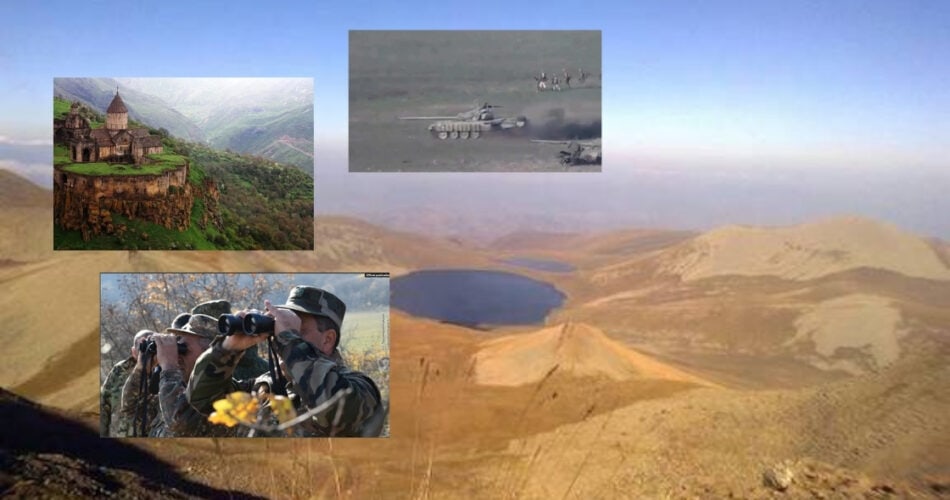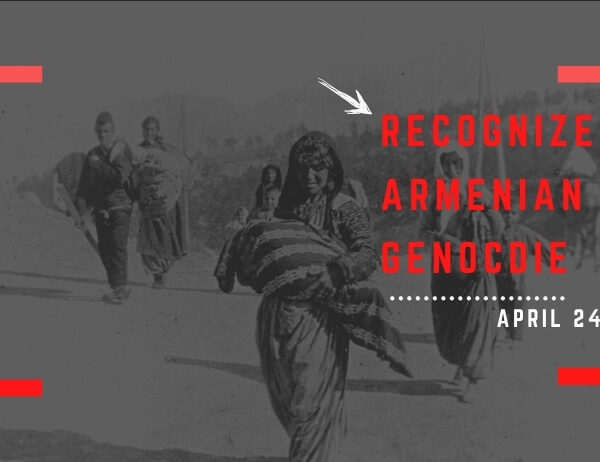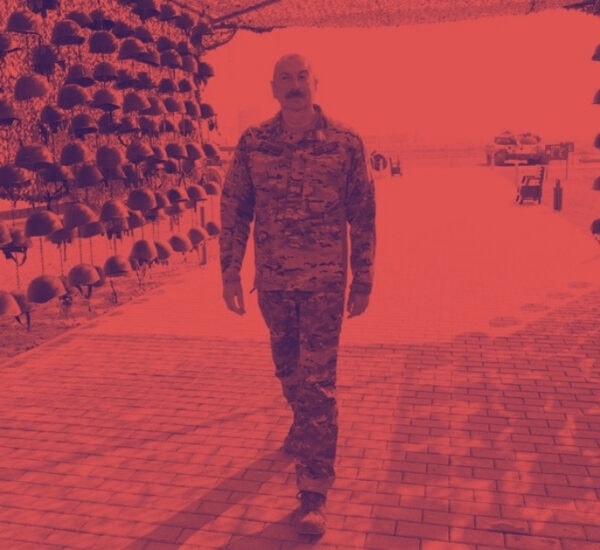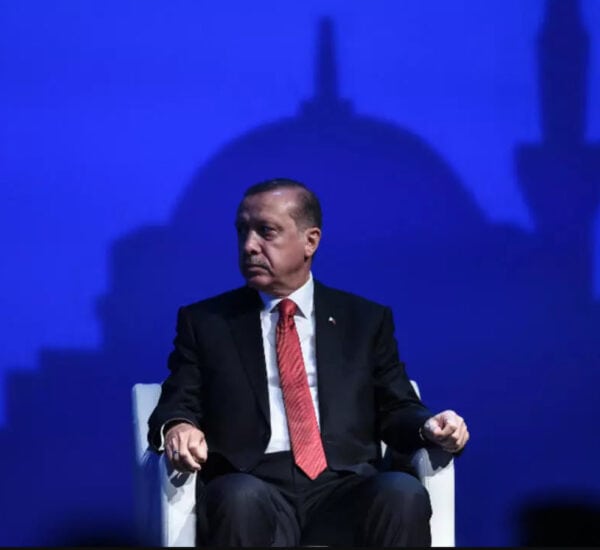In the Syunik Province — a region of 4,506 square kilometers with a population of about 153,000 — post-war developments took a new turn starting on May 12, 2021. Syunik, a region of strategic and vital importance located in southern Armenia, borders Իրանը to the south, Nakhichevan to the west, Artsakh (Nagorno-Karabakh) to the east (before the 2020 war), and Վայոց ձոր՝ Ջերմուկ: to the north.
It turned out that after the 2020 war, Armenia had no properly fortified defensive positions in this critical region.
This became evident on May 12, 2021, when Azerbaijani forces crossed the Armenian border in the area near Sev Lake (Black Lake) in Syunik Province. They advanced about 3 kilometers into Armenian territory, reaching the vicinity of Verishen village, and began deploying troops along the shores of Sev Lake.
Currently, about 30% of Sev Lake is under Azerbaijani control, while 70% remains under Armenia’s jurisdiction. In effect, the Armenia-Azerbaijan border in the Syunik sector passes directly through the lake itself.
Chronology of the Syunik Events
On May 5, at 17:00 (Yerevan time), media outlets first reported that during the night, Azerbaijani forces had infiltrated the Syunik region and occupied the area around Sev Lake (Black Lake).
At 18:00 the same day, the Syunik Regional Administration dismissed the reports as misinformation, stating that, just like in the Soviet era, the Armenia–Azerbaijan border passes through the lake, and each side controls its own section.
On May 11, Ilham Aliyev announced that the “40-kilometer Zangezur corridor separating Nakhichevan from Azerbaijan will be opened.”
On May 12, at 13:00, media outlets unanimously reported that Azerbaijani troops had launched an offensive toward the direction of Ishkhanasar in the Syunik region.
Minutes after the news broke, Syunik’s Deputy Governor, Karo Avanesyan, denied the circulating reports and stated that only border adjustments were taking place near Sev Lake.
At 13:15, however, the head of Verishen village, Ararat Ordian, contradicted the deputy governor, confirming that the reports were accurateև այն, որ during the night, the enemy had taken full control of the Sev Lake area.
By 16:00, the Armenian Ministry of Defense (MoD) announced that negotiations with the Azerbaijani side had begun, as early that morning, Azerbaijani forces had attempted to carry out certain operations along one of the border sections in Syunik under the pretext of “border adjustments.”
During the same period, Andranik Kocharyan, Chairman of the Standing Committee on Defense and Security of Armenia’s National Assembly, commented on the Azerbaijani military incursion, stating that there was indeed an issue in Syunik, but it was not one that should cause public panic.
“The problem’s solution is very close,” Kocharyan declared.
On the evening of May 12, at 20:00, Syunik Governor Melikset Poghosyan told reporters that he had returned from the Sev Lake area and confirmed that the Azerbaijani troops had not withdrawn from their positions.
Later that evening, at 21:00, an emergency session of the Security Council was convened, during which Acting Prime Minister Nikol Pashinyan announced that Azerbaijani forces had crossed Armenia’s state border in the Sev Lake area of the Syunik region and had advanced up to 3.5 kilometers into Armenian territory.
This information was officially confirmed.
On May 13, at 17:00, the Ministry of Health reported that 370 people in Sisian had contracted intestinal infections caused by contaminated water.
At the same time, Armenian President Armen Sarkissian issued a statement describing the situation in Syunik as extremely concerning:
“The Azerbaijani side bears full responsibility for any further escalation and for destabilizing the already sensitive situation in the region,”
the presidential statement read.
At 18:00, the CSTO (Collective Security Treaty Organization) website published an announcement, revealing that CSTO Secretary-General Stanislav Zas had held phone conversations with Armenia’s Acting Defense Minister Vagharshak Harutyunyan and Foreign Minister Ara Ayvazyan.
“The CSTO is closely monitoring developments in the border regions of Armenia’s Syunik province and, if necessary, will take actions provided for by the Collective Security Treaty and the CSTO Charter,”
the statement said.
At 20:00, Nikol Pashinyan convened another Security Council meeting, during which he announced that Armenia was preparing to appeal to the CSTO, as the situation was highly explosive and dangerous, in his words.
During the morning of May 14, Armenia’s Ministry of Defense informed the media that the Armenian side had presented its demands to the Azerbaijani forces, and the latter were awaiting further orders.
The Ministry avoided revealing the format of the negotiations or which Defense Ministry officials were directly involved.
At 14:00, it was announced that the parliamentary opposition had submitted signatures to Speaker Ararat Mirzoyan, calling for an extraordinary session of the National Assembly.
With 86 votes in favor, the National Assembly adopted a statement regarding Azerbaijan’s violation of Armenia’s territorial integrity, noting that around 250 Azerbaijani soldiers had illegally entered Armenian territory.
At 15:00, Deputy Prime Minister Tigran Avinyan, commenting on the situation around Sev Lake in Syunik, stated that Armenia must also be prepared for negative developmentsև այն, որ in the event of a worst-case scenario, support from allies would be expected.
Around the same time, Russian peacekeeping forces’ commander, General Rustam Muradov, began coordinating the Armenian-Azerbaijani border negotiations in Syunik.
At 21:30, the Ministry of Defense announced that the negotiations had not produced results and would resume on May 16 at 14:00.
On May 16, at 10:00, it was revealed that Azerbaijan had launched large-scale military exercises involving 15,000 troops, scheduled to continue until May 20.
By 11:00, reports emerged that Azerbaijani troops had attempted to carry out logistical operations overnight in Syunik.
According to an official statement from Armenia’s Ministry of Defense, the Armenian forces successfully prevented the maneuver.
At 19:10, Goris Deputy Mayor Menua Hovsepyan announced that negotiations with the participation of General Muradov had resumed and concluded, though the details were kept confidential.
By 22:00, Vahe Hakobyan, former Governor of Syunik and head of the “Reborn Homeland” party, stated that, according to his information, four Azerbaijani positions would be established within Syunik, each manned by about 15 soldiers.
As of May 16, no official confirmation or denial of this information had been issued.
Azerbaijani reactions during this period:

On May 15, Azerbaijan’s Foreign Minister Jeyhun Bayramov, during a phone conversation with Tajikistan’s Foreign Minister Sirojiddin Muhriddin, commenting on Armenia’s appeal to the CSTO, said that Yerevan’s appeal to the CSTO regarding the situation at the border is unfounded and an attempt to politicize the process.
On the morning of May 16, Azerbaijan’s Ministry of Defense announced that Azerbaijani military exercises had begun, during which armored vehicles, military aviation, and unmanned aerial vehicles would be employed.
At 13:00, commenting on Armenia’s statements about the recent incidents on the Armenian–Azerbaijani border, Azerbaijan’s Foreign Ministry spokeswoman Leyla Abdullayeva advised recognizing the reality of the interstate border regime along the international border, avoiding unfounded escalation in the region, and constructively resolving border issues with the Azerbaijani side through bilateral channels.
International reaction to the Syunik border issue
On May 13, Congressman Adam Schiff addressed the Biden administration regarding the incursion of Azerbaijani forces into Syunik. The U.S. Representative said it was time for the United States to realize that our policy had encouraged the President of Azerbaijan toward military escalation, which risks a new war.
On May 14, French President Emmanuel Macron proposed bringing the border tensions before the UN Security Council and, if necessary, providing military assistance to Armenia under a UN mandate.
On May 15, Canadian senator Leo Housakos wrote on Twitter that Azerbaijan’s violation of Armenia’s borders is a dangerous and aggressive act. According to him, Azerbaijan’s move represents a lasting threat and democratic countries should stand with Armenia.
On May 15, U.S. Representative Brad Sherman also commented on the events along the Armenian–Azerbaijani border. In a Twitter post, he stated that the United States must unequivocally condemn the violation of international law and work toward the withdrawal of Azerbaijani forces from Armenian territory.
On May 15, Spain’s Member of Congress and First Vice-Chair of the Foreign Affairs Committee, Antón Gómez-Reino, said he was following the situation in Armenia’s Syunik region and Sev Lake with concern. The congressman said it is necessary to respect international law to avoid threats to peace and stability in the region.



